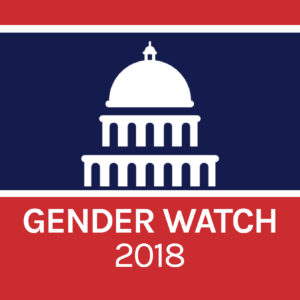Ahead of the Indiana primary election on May 8, 2018, we outline the numbers and proportions of women who have filed as candidates for congressional office.* The data below also provide points of historical comparison to give context to today’s presence and potential success of women candidates.
All data are provided from the Center for American Women and Politics, Eagleton Institute of Politics, Rutgers University. For a full list of the women candidates in IN primary races for congressional and statewide offices, see CAWP’s Election Watch page.
*Indiana statewide executive office nominees are selected at state party conventions in July.
CONGRESS
Current: 2 (2R) of 11 members of the IN congressional delegation (18.2%)
Filed: 12 (8D, 4R)
Percent of all Filed Congressional Candidates (D/R): 16% (12 of 75)
SENATE
Current: 0 of 2 senators
- No woman has ever represented Indiana in the U.S. Senate.
Filed: 0
- No women filed to challenge Democratic incumbent Senator Joe Donnelly. He is running unopposed in the primary.
- 3 men are competing for the Republican nomination.
HOUSE
Current: 2 (2R) of 9 representatives (22.2%)
- Both (2R) women House incumbents are running for re-election this year.
- A total of 7 (4D, 3R) women have represented IN in the U.S. House, including the 2 current women representatives from IN.
Filed: 12 (8D, 4R)
- 5 (4D, 1R) women are running to challenge incumbents in the general election, including 2 women seeking to challenge the Republican women incumbents.
- 2 (1D, 1R) women are running as challengers to incumbents in the primary election.
- 3 (3D) women are running in the state’s 2 open House seat contests (districts 4 and 6).

Districts with Women Candidates: 9 of 9
Percent of all Filed House Candidates (D/R): 16.9% (12 of 71)
Percent of all Filed Democratic House Candidates: 21.1% (8 of 38)
Percent of all Filed Republican House Candidates: 12.1% (4 of 33)
Recent history: The number of women who filed for major party candidacy for the U.S. House in Indiana in 2018 is greater than any other year between 2008 and 2018.
- In 2016, when the same number of U.S. House seats were open (2), 8 (2D, 6R) women filed as primary candidates.
- In 2010 and 2012, when 3 U.S. House seats were open in Indiana, no more than 7 women filed as primary candidates.
- The highest number of Democratic women running for the U.S. House in Indiana between 2008 and 2016 was 4 in 2008, exactly half the number of Democratic women who filed for House seats this year.


 From March to December 2018, the
From March to December 2018, the 